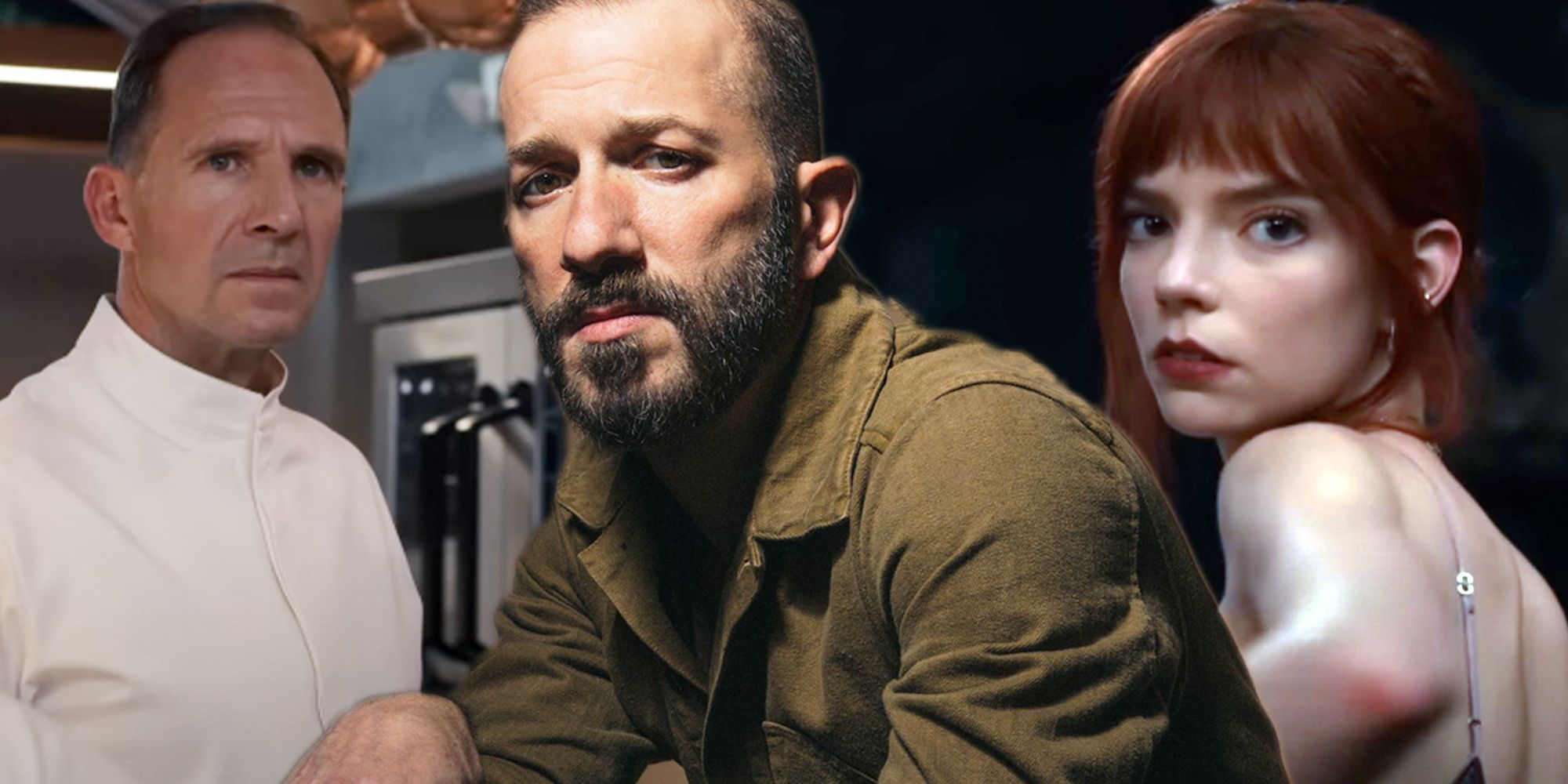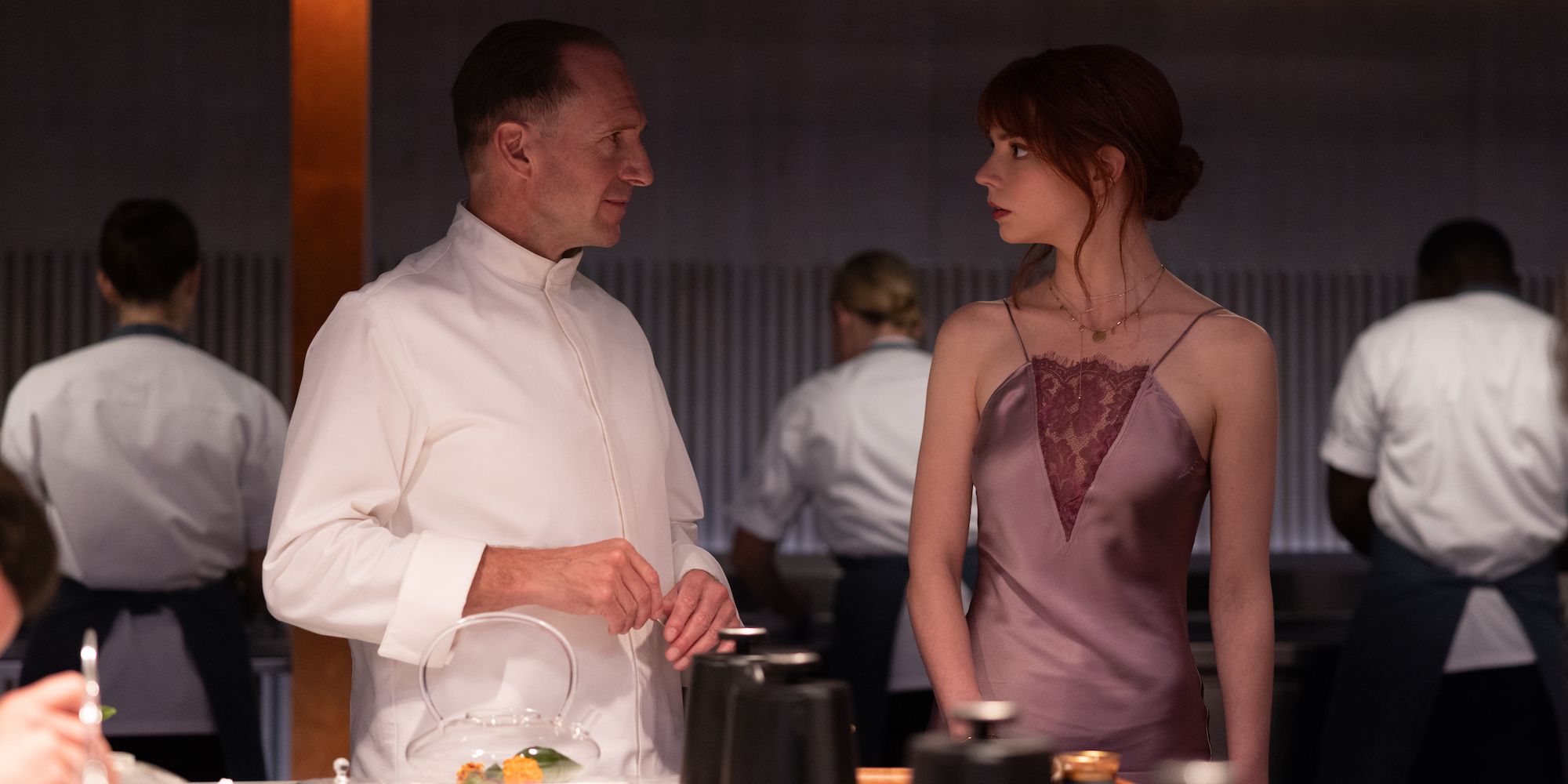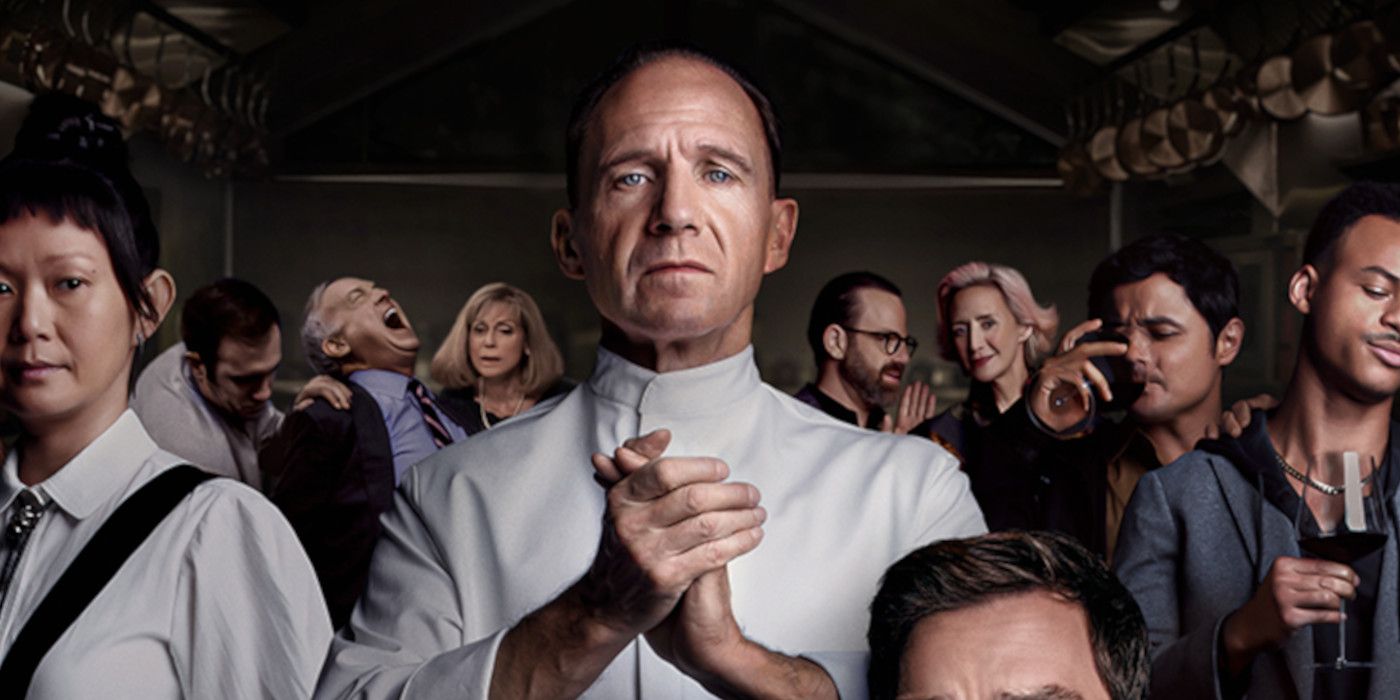The Menu, the upcoming dark comedy horror film from director Mark Mylod, is best seen with as little pre-existing knowledge of the story as possible. It's a gripping tale, with immense credit due not only to Mark Mylod but to the screenwriters Seth Reiss and Will Tracy, in addition to the movie's cast. Equal parts hilarious and horrifying, The Menu is a masterclass in the execution of a promising premise.
The twists and turns of The Menu are taken with agility in part thanks to a score composed by Colin Stetson. Stetson is a saxophonist with experience playing many other reed instruments and has worked with a wide range of musical artists such as Arcade Fire, Bon Iver, and Tom Waits. As a composer, Stetson certainly made a mark with his music for the 2018 film Hereditary but has a number of other films and projects under his belt such as the 2022 Texas Chainsaw Massacre and contributions to Red Dead Redemption 2.
Colin Stetson, who was careful not to spoil any of the film's moments, spoke with Screen Rant about the themes, techniques, and instruments he used to help tell the story of The Menu.
Colin Stetson on Composing for The Menu
Screen Rant: How early in the filmmaking process did you get involved with The Menu? You mentioned in another interview that you'll sometimes start with just a script, or even come in at the end of a film. Were you sold on the script alone, or were you brought in much later in the process?
Colin Stetson: Yes, I was sold on the script alone, that's for sure. That's almost always the first thing that I see, and then I'll know whether I want to go any further with a conversation about a film based on that. With a good script, you can tell, and this one specifically was very much in that vein. The music practically wrote itself based on the script. It was very, very clear, and utterly vivid; the tone, the shape, the function of it all.
I got the script as they were nearing filming completion, or they had just finished filming, and were starting to edit. I came in probably about a month before a director's cut, and then there were still several months of edits. Not super early, but not in any way last-minute. I've certainly done further on either end before, but this was a sweet spot.
You said the tone and everything came to you quickly, but did you have any inspiration when you were landing on the tone? Were you thinking of the culinary world, or did you lean on strings in the beginning because there's a class implication?
Colin Stetson: To me, the bones of the whole thing are the pizzicato strings. Pizzicato strings in the orchestral instruments, and later on, after certain moments, I introduce the pizzicato piano strings. They're much more agitated, harsher sounds. That was the first thing that I saw in the script. "Okay, that's the scaffolding. That's the drive. That's the propulsion. That's the humor. That's the artifice for how I connect points A to B throughout."
In terms of the classical approach, anybody knows that when we're talking about visualizing food there's always going to be a kind of gravity towards the Chef's Table aesthetic, visually and aurally and musically and whatnot. That was certainly something that was present in the filming already, and was present in the direction, and in the talks I had initially with Mark [Mylod], but my inclination was that I wanted to avoid it as a trope. For me, I went more into a decidedly Baroque direction, because the establishment of that kind of feeling lent itself very well to, later on in the film, having these kind of majestic, very church-y, revelatory moments. I'm trying to discuss it with as few spoilers as I can.
But yeah, these moments that feel a little more reverent. So, yes, at least having a skin, in the beginning, of a more string-forward, a more conventional string... although, not entirely. There are certain things that I was tweaking from the beginning, but kind of more veiled, so as to not make too much light of them until later. So much of this is establishing and subverting expectation, and so you're kind of trying to create a sense of familiarity with the ethos here, so that when I do have a moment - and this was there on the page, when you're reading the script - you have this moment, very much like a moment in Hereditary, where you have an opportunity to have an entirely different sonic aesthetic DNA in the waiting. And then just unleash it all instantly in one moment.
I saw that was a very, very rare opportunity, because usually a script has more of a gradual development, and certain things are already established in the beginning. But here was a moment where it really was the musical opportunity to do something really rash, very abrupt, and to me, whenever somebody sticks me on something like that, I get a whiff of the possibility to really go very hard in a particular direction, and no one tells me not to... that's my favorite thing. I try to identify that in scripts as best I can, and then I try to sell it in the execution of the music as best I can. Luckily for me, and the whole thing, it went as planned on this one.
And I know you mentioned transitioning from pizzicato strings to piano strings, but I think you play with expectations so well by subtly bringing in interesting sounds as the score goes on. Are there any interesting nontraditional instruments that you were using? Or, maybe, manipulating sounds digitally, or using synths?
Colin Stetson: There are very little of any synths on this. I do use a rare wind synth called a Lyricon, it's got an amazing oscillator and it reacts incredibly organically, but there's very little of that in this. The meat of it, again, is that pizzicato, driving, percussive nature, but there's also quite a bit of saxophone. Some of which are presented in a kind of, for lack of a better term, signature style. The arpeggiatic, sort of dreamy thing that I do. I used a fair amount of a traditional keyed string instrument called a nyckelharpa from Scandinavia, but anybody that plays the nyckelharpa probably won't recognize it from the aggressive and grungy way I'm playing with it and manipulating it. But several of the darker, more aggressive themes are played on that. [Also] Clarinets, a lot of woodwinds.
Some of the percussive things that are in there are actually glasses, and then a few pots and pans, and utensils and things that I found that had good sounds to them. I enlisted my good friend and colleague Greg Fox to come in and play a lot of the more kitchen cabinet sort of sound sources. I wanted to make sure in using those sounds that I wasn't jumping on some sort of a trope of, "Now we're banging on pots and pans in a rhythmic way," and so pretty much all of the uses of those things throughout the score are in an atmospheric capacity. Greg Fox, who is an amazing percussionist and drummer throughout, is also an incredible metal drummer and capable of some intensely rapid and dense rhythmic scapes, so there are certain things that he was doing that was basically just playing black metal cymbal blasts on an array of water glasses on the floor. A number of those tracks overlaid on one another then creates this multiplicitous shimmery quality of all these tiny little tactile - these pointillistic little stars in the sky.
I always like to try to approach things like that, where I'm thinking of a function of sound, and thinking of the convectional routes to provide that function, and then trying to circumvent that. Go around the back door, trying to find a way into that function from something else that might not be entirely obvious. There's a fair amount of that.
Obviously, you've done a number of projects, but you're perhaps best known for horror work between this and Hereditary. Are you drawn to that genre musically for any specific reason, or are there other genres you're interested in working in in the future?
Colin Stetson: I am pretty much genre-less in terms of what it is I consider and desire working with. I really just like storytelling. I like good stories. I like stories I haven't seen told before in ways that I find are novel and unique. I think that I am good at horror. I think on some fundamental level, that kind of affecting... the act and process of making other humans feel shades of discomfort, straight uncomfort, and fear is something that I feel as though I can see pretty clearly. [Laughs] I feel pretty confident that I can do that pretty much on a dime, but by no means is it the end-all or the entirety, or even the majority of it for me.
That's why I've been drawn to stories that are not entirely - I don't think I've ever really done any straight horror where that's all that's there. Not because of any ideological problem with that, but just the stories that I've reacted to have been ones that I think are a little bit more multifaceted, a little bit more nuanced. And I think arguably, I think a lot of the more horror-forward things that I've done are not really horror films. I wouldn't call The Menu, nor Hereditary horror films. Hereditary is a family drama couched in the skin or the vessel of a horror film, and The Menu is a comedy in somewhat the same function. So I do tend to like things that aren't so obvious on their face, but again, I'm totally open to all stories. I like the novelty of having never seen something, and I like affecting stories. Things that really do take chances and try to move their audience with their subject.
The Menu will be released in theaters on November 18th.



